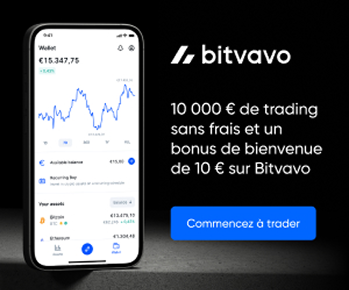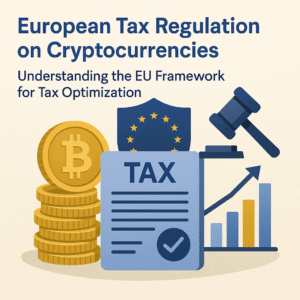Ardor Crypto: Functionality, Analysis, and Investment Outlook
Introduction & SEO Hook
Ardor is an innovative cryptocurrency that stands out for its unique approach to blockchain technology, separating blockchain security from application-specific functionality through child chains. This article offers a complete analysis of Ardor—technical workings, use cases, investment outlook, and how to securely buy Ardor.Key takeaways
Key Takeaways:
- Short-term volatility driven by market trends and institutional adoption
- Key influencing factors: modularity, interoperability, adoption of multichain blockchain ecosystems
- Long-term growth potential thanks to its scalable architecture
Ardor (ARDR) Overview
- Symbol: ARDR
- Category: Blockchain infrastructure
- Main Function: Offers a modular blockchain platform with child chains for various use cases
- Project Goal: Separate security and transaction processing responsibilities by allowing each project to use a dedicated child chain, while relying on the security of the main chain
Platforms to buy ardor
How Does Ardor Work?
Ardor is based on a unique blockchain architecture introducing child chains. Unlike most blockchains where all applications coexist on the same chain (e.g., Ethereum), Ardor allows each application to operate on its own chain while benefiting from the main chain’s security.Key Technologies
- Consensus Mechanism: Proof-of-Stake (PoS) Ardor uses an energy-efficient PoS system, eliminating the need for power-intensive mining.
- EVM Compatibility: Not compatible with Ethereum Virtual Machine Ardor uses its own Java-based smart contract system.
- Interoperability: High Child chains can interact directly, transfer assets or messages without complex bridges.
- Automatic Transaction Pruning: Ardor supports purging old transaction data to reduce blockchain size—an advantage in terms of scalability.
Utility of the ARDR Token
- Used for securing the blockchain via staking
- Child chains use their own native tokens, but rely on ARDR for anchoring to the parent chain
- ARDR is not used to pay transaction fees on child chains (e.g., Ignis uses IGNIS for its fees)
Highlights:
- Separation of data and security
- Optimized scalability
- Ideal for enterprises seeking a modular blockchain
Project History and Background
Ardor was launched in January 2018 by Jelurida, a Swiss company focused on blockchain development solutions. The team behind Ardor previously created Nxt, one of the earliest Proof-of-Stake blockchain projects. Ardor is a major evolution of Nxt, built on the lessons learned from its predecessor.Key Milestones
- 2013: Launch of Nxt, first open-source PoS project
- 2016: Official announcement of the Ardor project
- 2017: ICO of the IGNIS token (Ardor’s native child chain)
- 2018: Ardor mainnet launch
- 2019–2023: Deployment of multiple child chains and real-world use cases (voting, logistics, education)
Founders and Team
Founding Team
- Lior Yaffe: Jelurida co-founder, lead developer of Ardor, 20+ years of Java development experience
- Petko Petkov: Software architect, blockchain engineering and security expert
What Makes [Nom cryptomonnaie] Unique?
Ardor’s Unique Features
A Unique Parent-Child Architecture
Ardor’s value proposition is its modular structure. While other blockchains are often congested or require developers to build a new chain from scratch, Ardor provides a complete infrastructure where each client can deploy a dedicated child chain.Real Example:
The Ignis chain (Ardor’s native child chain) allows token issuance, asset management, governance, and online voting—without writing a single line of smart contract code.Real-World Use Cases
- Electronic voting: Austrian foundation A-Trust tested a digital voting system built on Ardor
- Supply chain management: The HotCity project incentivized citizens to share urban data using Ardor tokens
Technical Advantages
- Blockchain pruning: Remove historical data while maintaining ledger integrity
- Native interoperability: Child chains communicate directly, no external bridges needed
Unique Value Proposition
Ardor is positioned as a B2B-ready blockchain: turnkey, highly customizable, and ideal for institutional projects. Its low barrier to entry and energy efficiency make it perfect for governments, NGOs, and SMEs.
Implicit Comparison with Ethereum, Polkadot, and Avalanche
| Feature | Ardor | Ethereum | Polkadot | Avalanche |
| Consensus | PoS | PoS | NPoS | Snowman PoS |
| EVM Compatibility | No | Yes | Partial | Yes |
| Architecture | Parent/child | Monolithic | Relay-chain/parachains | Subnets |
| Real-world use cases | Voting, logistics, education | DeFi, NFTs | Blockchain interoperability | DeFi, gaming |
| Blockchain pruning | Yes | No | No | No |
Conclusion and Future Outlook
Ardor represents a significant advancement in modular blockchain evolution. Thanks to its parent-child architecture, it offers security, efficiency, and flexibility without compromising performance. With real-world applications in production, proven technology, and an experienced team, Ardor continues to attract institutional and technical adopters. Its main challenge is visibility compared to giants like Ethereum or Polkadot. However, for developers and investors seeking a mature, practical, and solution-oriented project, Ardor deserves a place in any well-thought-out crypto portfolio.
SEO-Optimized FAQ
What is the ARDR token used for? The ARDR token is used to secure Ardor’s main blockchain through staking. Is Ardor a good investment? Ardor has strong potential for institutional use cases. Its success will depend on large-scale adoption. How is it different from Ethereum? Unlike Ethereum, Ardor separates security from execution using a parent-child architecture without relying on the EVM. Where can I store ARDR tokens? You can store ARDR using wallets like Ledger, Trust Wallet, or the official Ardor Wallet. Is the project secure? Yes, Ardor uses the proven PoS consensus from Nxt and benefits from regular audits via Jelurida. How can I buy Ardor? You can buy ARDR on platforms like Binance, Kraken, or Crypto.com in just a few clicks.Disclaimer :
Trading is risky and you may lose all or part of your capital. The information provided does not constitute financial advice and/or an investment recommendation
Top-Rated Platforms to Trade Crypto
Explore Our Financial Views on the Market
Crypto News & Insights
Blockchain and Cryptocurrency Conference (B2C’ 2025):
The Blockchain and Cryptocurrency Conference (B2C’ 2025) is scheduled for...
European Tax Regulation on Cryptocurrencies: Understanding
The regulation of the cryptocurrencies market in the European Union...
European Blockchain Convention 2025: Connecting Europe’s
Europe’s blockchain landscape is evolving rapidly despite challenges. Blockchain job...
Blockchain Life 2025 Dubai: A must-attend
The Blockchain Life Forum 2025, happening on October 28–29 in...













